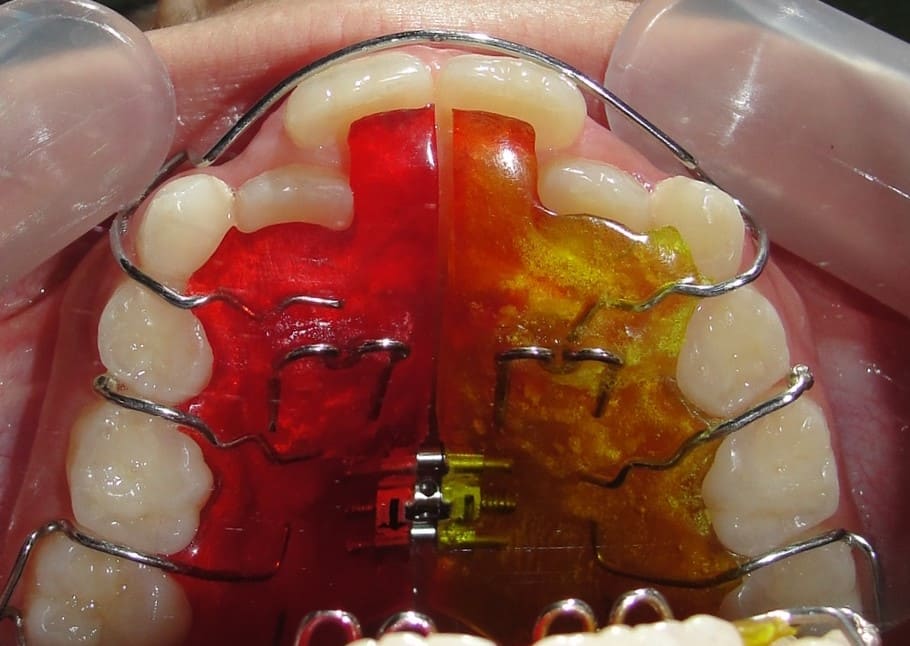Blog
مقالات
Finger-sucking habit
Parents often visit my clinic complaining about their kids Finger-sucking habit, and usually they are afraid from the development of serious problems in their children's jaws and teeth because of this habit. In fact, thumb-sucking habit and dental problems resulting from it are not uncommon in middle east region.
To learn more about this problem, I'll start by explaining what the word "habit" means?
A habit: Is a continuous repetition of an action, that begins as a conscious action, but later turns into an unconscious behavior. From the definition, we can notice that when this problem lasts, it becomes a two- aced problem, both physical and psychological.
Childs are born with a great need for sucking - this is due to the need for breastfeeding - and when they do not breastfeed, they need something to suck, and they resort to their fingers, so this matter can be avoided simply by giving the child a "pacifier" as a substitution for his thumb-sucking need.
This need for sucking begins to decrease at the age of six months, but keep doing this
behavior (whether sucking a finger or sucking a pacifier) after this age will turn it into a habit.
It is advised to stop the pacifier for children at the age of 6 months, and they can be given special things such as Infant biscuit to replace the pacifier.
But even if this habit lasts in children under the age of 3 or 4 years, it is still normal and often disappears automatically after this age.
However, the continuation of this habit after the start of permanent teeth eruption - starting from the age of 6 years - often leads to problems in the teeth and jaws.

Why finger- sucking habit persist?
1.The psychological factor:
The psychological factor has a large role in the formation of any habit, as I mentioned earlier, and thumb sucking habit is not an exception, as many of the psychological situations that the child may experience can lead to strengthening, and continuation of the thumb sucking habit beyond the age of 4 or even 6.
The most important psychological situations are:
•The birth of a new baby and giving him all the attention.
•The lack of listening and conversations with the child and the lack of taking care of the child, especially when parents go out to work and leave their children in nursery or with nannies for long hours.
•The entrance to the school for 1st time and the meeting with the new children there.
•Parents attitude regarding this habit: lack of understanding for the thumb sucking habit nature, and the correct methods to stop it, especially if they try to stop this habit through violence or insult.
2.Artificial feeding: Many studies have found that stopping breastfeeding at an early age has a big role in the persistent thumb sucking habit.
The persistence of thumb-sucking habit after the permanent front teeth eruption leads to
several abnormalities in the teeth and jaws, the most important of which are:
1.The backward inclination of the lower front teeth “incisors”
2.The forward inclination of the upper incisors that leads to protrusion problem (( which we talked about in a previous article on this website)).
3.Creation of a gap between the upper and lower front teeth, we call it “anterior open bite”.
4.Narrowness in upper jaw, which results from the imbalance between tongue and cheek pressure on the jawbone. When the child places his finger between the upper and lower front teeth, the tongue is pushed down and stay in a lower position where it doesn't apply pressure on the roof of the mouth cavity “the palate”, while the pressure of the cheeks increases due to the cheeks' muscles contraction during the finger sucking process.
5.Upper jaw narrowness lead to several problems such as posterior cross bite, which in turn can lead to left or right lower jaw deviation when during mouth closure, due to occlusion instability.

The type and the severity of the resulted abnormalities varies due to several factors:
1- The affected teeth differs according to the location and position of the finger inside the mouth during the sucking habit.
2- Which finger was used, (thumb or forefinger - one or more fingers).
3- The severity of malocclusion may vary according to the duration of the sucking habit
And if it is persistent or intermittent. Children who do the habit intermittently get less severe deformities than children who do the habit for an uninterrupted (6) hours a day and more, or who do the habit while sleeping all night.
How can we stop this habit?
As I mentioned before, this problem has an obvious psychological aspect, therefore the treatment will depend in the beginning on psychological methods.
In case of lack of care given to the child, we need to show more attention and spend more time with him (“care” here means to talk and play with the child not to bring him presents and toys).
If the child is mentally mature enough, we can start a conversation with him at home or in the clinic – It is preferred to start at home- and I will show you below how we can start this conversation (this can be done by one of the parents or the orthodontist).
The words we use - as orthodontists or parents - with the child suffering from this habit are vitally important. These are some sentences I typically use:
1.It is not a big problem that you suck your thumb, since you do not do it so much. I know that your thumb comes into your mouth all by itself. Of course, that's because your thumb is happy and comfortable in your mouth, so it visits often! but unfortunately these frequent visits deform your teeth and might make your mouth ugly. That is too bad, isn't it!?”
2.Challenging the child’s willpower. “You know that it all depends on you. Either you are the boss, or your thumb is. But you need to know that if your thumb is the boss, then you will have crooked teeth.”
3.Offering to help the child for the first time "I think you are ((the boss)) so if you want, I can help you.
4.Offering an additional help for the child later "I know it is easy for you to be the boss during the day, but I also understand that during the night, your finger exploits your sleep and returns to your mouth all by himself, I can help you with that, too."
5.Offering a good deal. “Listen, if you can solve this problem by yourself, we won’t need to use big and annoying appliances. and this will be much more comfortable for you.
Most of the children will come back a week later and tell you exactly what you already suggested: “It’s all right during the day, but the hard part is at night!” , and that’s when the second and decisive stage begins.
take up the dialogue where you left off a week before:
“You know, if your thumb comes into your mouth, it’s because it likes the place there, It is happy and comfortable.
So if you tell your thumb not to go there, you must provide it with another place to rest,
Now that I know this problem well, I have built a sort of house for your thumb, where it will have a soft, comfy, and cozy place to live”.
when you finish your day, before you go to sleep, your thumb will be the last one you speak to. You are going to give your thumb an order—your order. You will look at it in front of you, even in the dark, and you will say to it three times:
(Parents can ask a dressmaker to tailor a cloth bag attached to the baby's pajamas,
drawings and colors can be added to the bag so that the kid likes it)
“At the end of the day, before you go to sleep, your thumb will be the last one you speak
to. You are going to give your thumb an order, look at it in front of you, even if its dark,
and say to it three times:
“‘Thumb, tonight you will not come into my mouth! And you will sleep in your new home” , and we continue our conversation with the child, where we left off “Then you will fold your thumb in the palm of your hand and close your four fingers over it to protect it. You will place your hand in the ‘thumb home’ sewn onto your pajamas, and you go to sleep quietly.”

Most children usually need 2 to 3 weeks to get rid of this habit through this technique,
but if the habit continues or the child is not cooperative, then we need to start with another treatment method.
When the psychological methods fail to stop this habit, we need to resort to mechanical devices, and we start gradually from the easiest methods to the hardest.
1- Use a finger guard.
There are many kits available online or at your orthodontist's clinic, designed to
physically prevent your child from sucking his thumb. The positive thing is that these
tools are chemical-free and usually are childproof so your child can’t remove them.
while the downsides are that the finger guard is very noticeable, and can make it hard for your child to use his hand for playing or eating.

2- Use a hand stopper or brace
This brace attaches to your child’s elbow and prevents it from flexing, so he can’t bend his arm enough to reach his mouth.
If your child’s case is severe, this may be the only effective tool that can help — but it may also limit the kid's movement and make him feel frustrated.

3-Intraoral habit breaker:
When all the previous methods fail to stop the habit, then we resort to these devices,
which are made by an orthodontist or a pediatric dentist.
And we have two types of these devices:
1-Removable habit breaker:
That the child can remove the device and place it back. These devices contain metal projections to remind the kid not to put his finger in his mouth.

2-Fixed habit breaker:
This design is fixed on teeth and contains also metal projection to remind the child to not put his finger in his mouth because he will feel discomfort if he put it.

From my experience as an orthodontist, I found that fixed devices, although they are annoying, but they are the most effective tool in stopping this habit.